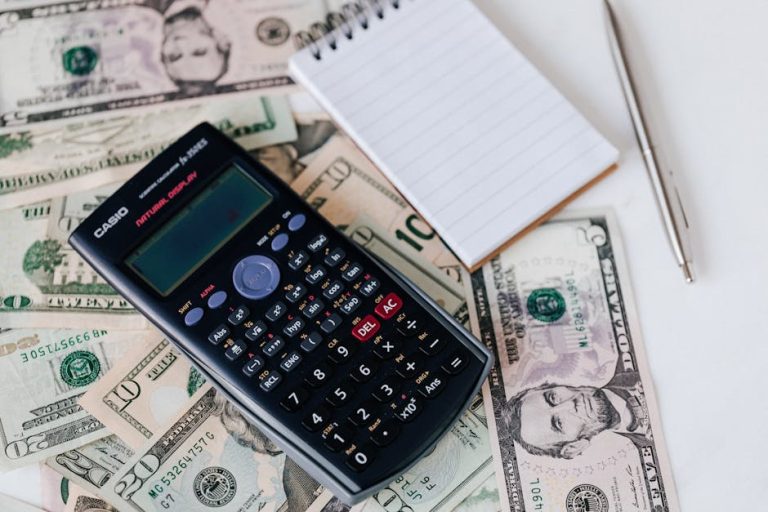In the dynamic world of financial transactions, understanding the layers of security that protect your money is vital. One crucial aspect of this security arsenal is the Credit Card Security Code. Let’s embark on a journey to demystify this code, exploring its purpose, types, and how it shields you from potential threats.
Decoding the Credit Card Security Code
1. Defining the Code
The Credit Card Security Code, also known as the Card Verification Value (CVV), Card Security Code (CSC), or Card Verification Code (CVC), stands as a sentinel on your credit card. This three- or four-digit code acts as a gatekeeper, preventing unauthorized usage.
2. Types of Security Codes
Different credit card companies have their variations:
- CVV1: Stored on the magnetic stripe for in-person transactions.
- CVV2: A three-digit code for online or phone transactions.
- CVC2: Similar to CVV2 but specific to Mastercard.
- CID: A four-digit code on the front of American Express cards.
Purposeful Guardian: Why the Security Code?
1. Authentication Magic
The primary objective of the security code is to authenticate transactions, especially in scenarios where the physical card isn’t present. It ensures the person making a purchase has access to the card or has had it at some point, adding an extra layer beyond the card number.
2. Fortifying Against Misuse
Unlike other card details, the security code is neither stored on the card stripe nor embossed, making it an invaluable tool. Even if a card is copied or skimmed, the absence of the security code thwarts potential misuse.
Unveiling the Operation
1. Transaction Safeguard
When making a purchase, the cardholder inputs the security code. The merchant’s system then communicates with the card-issuing bank to validate the correctness of the code. If it aligns, the transaction proceeds; otherwise, it faces rejection.
2. No Safe Haven for Security Codes
Stringent regulations, such as the Payment Card Industry Data Security Standard (PCI DSS), prohibit merchants from storing security codes. This shields the codes from being compromised even if a merchant’s database is breached.
Limitations and Beyond
1. Potential Vulnerabilities
While robust, the security code isn’t foolproof. Physical theft of the card can expose the security code, and phishing attacks may trick cardholders into revealing this crucial detail.
2. Future Horizons: Evolving Security
As the financial landscape evolves, so do security measures. The future might witness advancements such as biometric authentication and dynamic security codes, continually raising the bar against potential threats.
Credit cards, while facilitating seamless transactions, harbor the risk of fraud. In response, credit card companies devised security features like the Card Verification Value (CVV), Card Verification Code (CVC), or Card Identification Number (CID), collectively known as credit card security codes. This article delves into the purpose and historical context of these codes, exploring their critical role in securing online and phone transactions.
Tracing the Roots: A Necessity in the Era of E-commerce
With transactions evolving from face-to-face to digital realms, the need arose for a solution ensuring secure purchases where the card isn’t physically present. This is where credit card security codes entered the scene, addressing security risks prevalent in the age of e-commerce.
Safeguarding Transactions: The Purpose and Function
Credit card security codes serve a dual purpose: validating physical possession and preventing misuse. By acting as an authentication step beyond the credit card number, these codes enhance transaction security, especially in scenarios where the card’s physical presence isn’t required.
The Mechanics: How Credit Card Security Codes Operate
During a purchase, when a cardholder inputs their credit card details, the security code becomes a crucial field. The merchant’s system then communicates with the issuing bank to verify the accuracy of the security code. If the code aligns, the transaction proceeds; if not, it gets declined.
Limitations and Future Frontiers: Navigating Security Challenges
While credit card security codes offer robust protection, they aren’t foolproof. Physical theft or falling victim to phishing attacks pose risks. The article sheds light on the limitations and discusses evolving security measures such as biometric authentication, tokenization, and dynamic security codes.
A Sentinel Against Fraud: The Role of Credit Card Security Codes
In the ever-changing landscape of transactions, the credit card security code has emerged as a pivotal player in combatting credit card fraud. As the financial industry invests in advanced security measures, the fundamental principle of verifying transaction participants remains unchanged—ensuring a secure financial ecosystem.
Decoding Credit Card Security Codes: An Essential Shield
A credit card’s security code, often referred to as Card Verification Value (CVV), Card Security Code (CSC), or Card Verification Code (CVC), acts as a formidable barrier against unauthorized card usage. Understanding the types and purpose of these codes is vital for secure transactions.
Types of Credit Card Security Codes
Credit card companies employ various security codes, each serving a unique purpose:
- CVV1: Stored on the magnetic stripe for in-person transactions.
- CVV2: A three-digit code on the card’s back for online or phone transactions.
- CVC2: Similar to CVV2 but specific to Mastercard.
- CID: A four-digit code on the front of American Express cards.
Purpose Unveiled
The primary role of credit card security codes is thwarting fraudulent activities. Merchants use these codes to verify the cardholder’s physical presence during a transaction, making it challenging for fraudsters to exploit stolen card details online.
Locating Security Codes on Different Cards
The location of the security code varies by card issuer:
- American Express (CID): A four-digit code on the card’s front, above the card number.
- Mastercard (CVC2): A three-digit code on the card’s back, right of the signature strip.
- Visa (CVV2): A three-digit code on the card’s back, right of the signature strip.
- Discover (CVV2): Similar to Visa, located on the back.
Other credit card companies may use distinct security codes or nomenclature, necessitating verification from the card issuer.
Safeguarding Your Security Code
Ensuring the security of your credit card code is paramount:
- Avoid Sharing: Never share your security code.
- No Recordings: Refrain from jotting it down.
- Digital Caution: Avoid storing the code on electronic devices.
- Selective Sharing: Provide the code only to trusted merchants.
- Beware of Scams: Stay vigilant against phishing scams seeking your security code.
Responding to Code Theft
If you suspect your security code is compromised, act promptly:
- Contact Issuer: Report the theft to your credit card issuer.
- Request Replacement: Secure a new card with a fresh security code.
- Regular Review: Monitor account transactions for unauthorized activities.
Understanding and safeguarding your credit card security code is fundamental in ensuring secure financial transactions.
Conclusion

Conclusion
Credit card security codes are an additional layer of protection against fraudulent activities. They are unique codes printed on the card and used during transactions to verify that the cardholder has the card in their possession. It is essential to keep your security code safe and report any theft or suspicious activities to your card issuer immediately.
FAQ:
- Is the credit card security code the same as the PIN? No, the credit card security code differs from the Personal Identification Number (PIN). The PIN, a four-digit code, facilitates ATM cash withdrawals, while the security code ensures cardholder verification during transactions.
- Can I change my credit card security code? No, the credit card security code is a unique identifier assigned by the card issuer and cannot be changed by the cardholder.
- Do all credit cards have security codes? While most credit cards feature security codes, exceptions exist. Certain debit cards and prepaid cards may lack this additional security feature.
- Is it safe to provide my security code to online merchants? Generally, it is safe to share your security code with reputable online merchants. However, exercise caution against phishing scams, ensuring you only provide the code to trusted sources.
- Can someone use my credit card without the security code? Using a credit card without the security code poses greater difficulty. The security code acts as an extra layer of protection during transactions, verifying the cardholder’s possession of the card. Stay vigilant for enhanced security.
Table of Contents
Get Your Credit Repaired With credit-repair.com
Google Review:
or
WHY CHOOSE US
We also would counsel you on real, legal, and ethical credit repair for clients rebuilding their life and credit ratings after hardship. Achieving financial freedom is the ultimate dream allowing you to live the life you want to enjoy. Get the help of a professional credit repair company by contacting us.
Our credit restoration services are tailored to your unique situation, and we never make you pay for anything you don’t need. When you sign up for either our Essentials or Essentials Plus packages, you can rest assured that you’ll be receiving the bare minimum of care necessary for your specific situation. You can opt for additional customization options to further tailor our offerings to your specifications. In this manner, you won’t overpay for perks you don’t use. This is the essence of adaptability.







